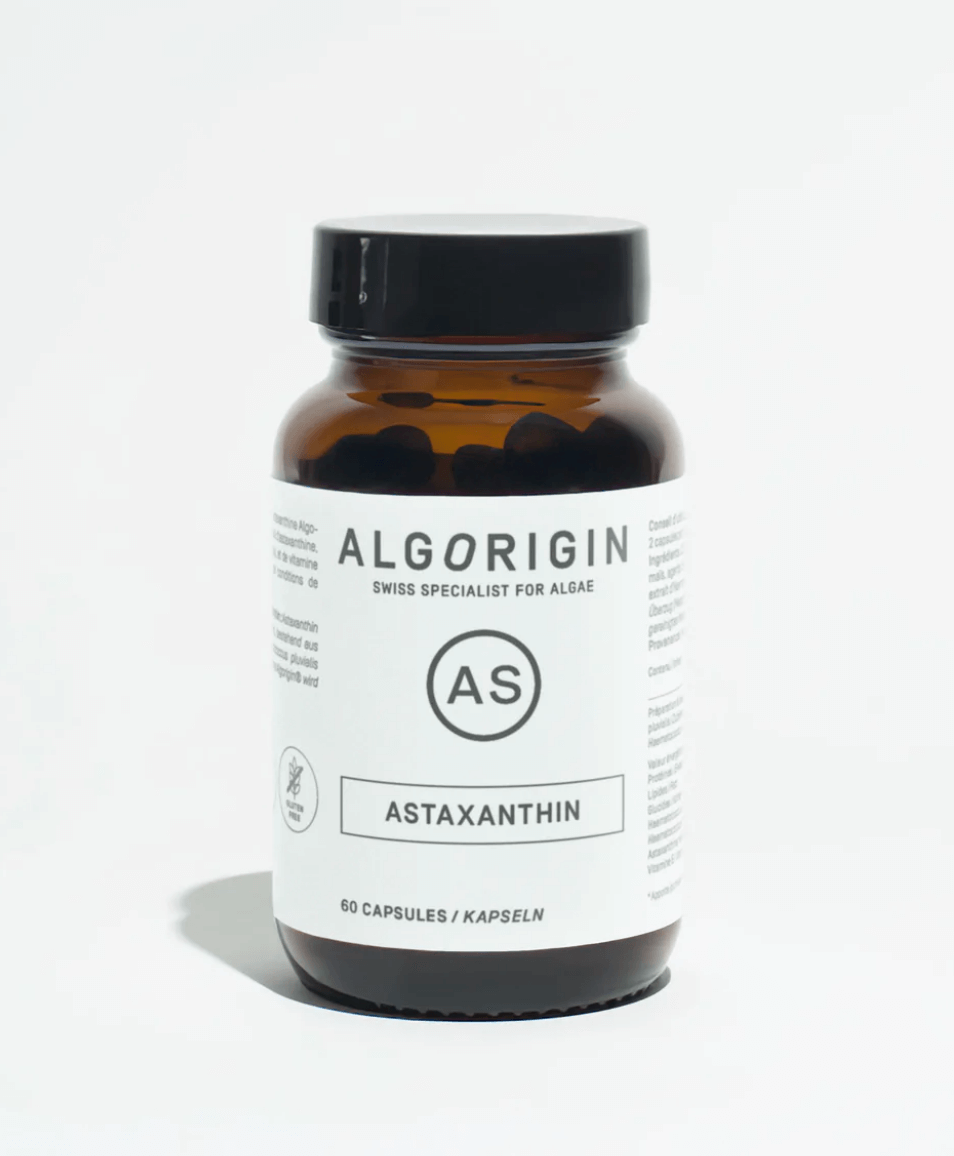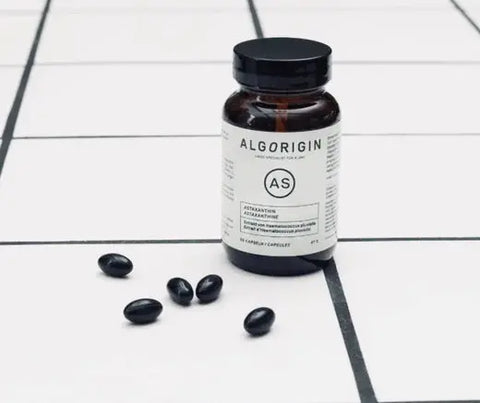Astaxanthin is one of the antioxidant supplements most sought after right now, and for good reason. Rich in vitamin E, a powerful antioxidant, but also a substance with properties anti-fatigue and anti-inflammatory, as well as a multitude of other health benefits.
Part of a group of micronutrients Called carotenoids, astaxanthin has a distinctive reddish color. Consuming foods rich in astaxanthin has myriad notable health benefits.
In fact, the effects of astaxanthin on the health have been well documented in over 1000 peer-reviewed medical publications and journals.

The History of Carotenoids
L' astaxanthin is one of the many carotenoids well known. Carotenoids are pigmented phytochemicals found abundantly in plants, bacteria, algae, and a plethora of other living organisms. They are one of the most diverse groups of natural pigments, responsible for the vibrant orange, red, and yellow colors found primarily in vegetables, fruits, and many parts of plants.
THE carotenoids belong to the class of fat-soluble terpenes, compounds also known as tetraterpenoids. They are among the oldest and most studied phytochemicals in the history of biology. In fact, their uses and benefits have been studied in detail as far back as the 1800s. Perhaps the most recognizable member of the group is carotene, often associated with carrots and, by extension, vitamin A. It’s not all that surprising that carotene was the first known carotenoid. Heinrich Wilhelm Ferdinand Wackenroder actually discovered it by accident in the late 1820s while studying another phytochemical called an anthelmintic.
However, it is at a famous Austrian chemist , Adolf Lieben, is credited with discovering carotenoids in human tissues while conducting research in 1863 at the University of Palermo. Today, there are over 1,100 documented carotenoid compounds. They can all be classified into two broad categories:
- Xanthophylls - These are oxygen-containing carotenoids that usually have a yellow pigment. Astaxanthin, beta-cryptoxanthin, lutein, and zeaxanthin are good examples. Foods rich in xanthophylls include pumpkin, egg yolks, avocado, summer squash, spinach, and kale. They are often linked to eye health.
- Carotenes - These are non-oxygenated carotenoids, usually related to the orange pigment. They include alpha (α) carotene, beta (β) carotene, and lycopene. Foods rich in carotene include papaya, tomatoes, tangerines, sweet potatoes, cantaloupe, and, of course, carrots.
Regardless of their category, all carotenoids have antioxidant properties which vary depending on the compound in question.
What is astaxanthin?
Astaxanthin is an increasingly popular carotenoid that belongs to the xanthophyll subclass.It is naturally present in some algae and its color varies from red to pink. Astaxanthin can also be found in some types of seafood. In fact, it is responsible for the reddish color of lobster, salmon, fish eggs, trout, crabs, and other seafood. This substance is also responsible for the pink color of the flamingo's features.
In common and technical usage, astaxanthin goes by many other names, including 3R,3'S-astaxanthin, 3R,3'R-astaxanthin, 3S,3'S-astaxanthin, 3,3′-dihydroxy-4,4′-diketo-beta-carotene, Dihydroxy-3,3′ dioxo-4,4′ beta-carotene, Ovoester, Micro-Alga, Microalgue, Microalgae, Astaxantina or Astaxanthin.
Astaxanthin is often called "the king of carotenoids" because of its reputation as one of the most powerful antioxidants present in nature. This substance is particularly important because it never transforms into a pro-oxidant . This means that it can never cause destructive oxidation in the body, making it perfect for health benefits and performance.
That said, astaxanthin, as an antioxidant, helps reduce oxidation, a natural phenomenon that is responsible for the vast majority of inflammation in our bodies. If left unchecked, prolonged inflammation can cause insurmountable damage to our health and well-being. Specifically, inflammation is responsible for premature aging, brain-related conditions like dementia, eye problems, heart disease, arthritis, and a host of cancers. As an effective antioxidant, astaxanthin can help fight these diseases and a long list of other health problems.

How does astaxanthin work?
Your body cannot produce astaxanthin on its own, which means you must obtain it through diet or supplements. Those who prefer foods rich in astaxanthin should eat plenty of salmon, shrimp, lobster, rainbow trout, and other seafood.
Seafood, however, may not be a plausible way to get a significant amount of astaxanthin . The richest seafood source—sockeye salmon, for example—contains only 4.5 mg of this compound per ounce. That’s not enough to get the desired health benefits. That’s why most people opt for dietary supplements. Those made from Pluvialis algae contain the highest amount of bioavailable astaxanthin. 3% of its biomass is pure astaxanthin. In fact, it’s the only supplement approved by the Food and Drug Administration (FDA) as a safe and viable source of dietary astaxanthin.
Phaffia rhodozyma, a popular red yeast , and some crustaceans are the two other major commercially viable sources of astaxanthin. There is also synthetic astaxanthin, traditionally used by manufacturers to produce food colorings and fish feed.
So how does astaxanthin actually work?
It's pretty simple and straightforward: it's an antioxidant.
- L' 100% natural astaxanthin is 550 times more effective as an antioxidant than vitamin E.
- Astaxanthin is nearly 6,000 times more powerful than vitamin C, one of the most important vitamins for strengthening the immune system.
- It is also 550 times richer as a source of antioxidants than green tea or other catechins.
In this context, it is obvious that astaxanthin is without a doubt one of the best ways to ingest antioxidants into your body. As you may already know, antioxidants are important for your body. They play an important role in human growth, health, and well-being. These ingenious compounds have some of the most powerful anti-inflammatory properties.
THE antioxidant properties astaxanthin help explain its benefits and health claims, especially when it is used to help manage and treat a variety of diseases such as cancer. Biologically speaking, antioxidants are molecules agile which repair damage caused at the cellular level by unstable and harmful molecules called free radicals. These molecules are constantly released during metabolism.
Don't get me wrong, the free radicals also have their purpose. For example, our disease-fighting immune system uses certain free radicals to kill viruses, bacteria, and other germs that try to infect our bodies. Unfortunately, untamed free radicals can also destroy good cells. There is supposed to be a fine balance between free radicals and antioxidants. In fact, it is the role of antioxidants like astaxanthin to keep free radicals in check.
Anything that disrupts this balance can lead to oxidative stress, a condition that can be detrimental to our bodies. Antioxidants act on free radicals by donating electrons to them. This process makes the free radicals stable and neutralized. So, by definition, antioxidants reverse the oxidation process – and therefore prevent oxidative stress from occurring. Persistent oxidative stress can lead to an increased risk of health problems, including neurodegenerative disorders, heart disease, and a number of cancers. Prolonged interference from free radicals can contribute to accelerating the aging process.
In our daily lives, we are exposed to several risk factors that increase the formation of free radicals. Certain lifestyle habits and environmental factors promote the oxidative stress These include excessive alcohol consumption, a high carbohydrate diet, certain toxins, smoking, excessive consumption of certain metals (zinc, copper, magnesium or iron), excess or lack of oxygen in the blood, air pollution and infections, to name a few.



